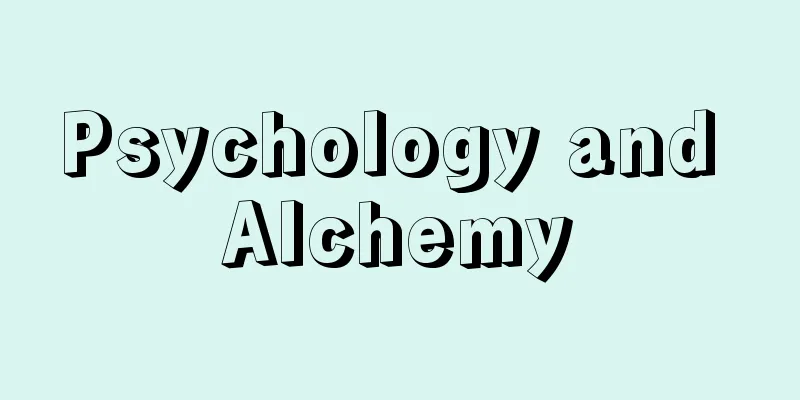Psychology and Alchemy

|
One of the major works by Swiss psychologist and psychiatrist Jung. Published in 1944. Jung found in the symbolic expressions of alchemy, which was previously considered pseudoscientific, a process that parallels the development of human psychology, and in this book he attempted to prove this. The book is made up of three parts: Part 1 explains the relationship between alchemy and religious psychology; Part 2 deals with mandala-like dreams, which are said to be symbols of the self, and hallucinations of cosmic clocks; and Part 3 discusses the representation of salvation in alchemy. [Akiyama Satoko] Source: Heibonsha World Encyclopedia, 2nd Edition Information |
|
スイスの心理学者・精神科医ユングの代表的な著作の一つ。1944年刊。ユングは従来疑似科学的なものとして考えられていた錬金術の象徴的表現の中に,人間の心理の発展と並行する過程を見いだし,本書によってそれを証明しようとした。錬金術と宗教心理との関連を説く第1部,自己の象徴といわれる曼荼羅様の夢,宇宙時計の幻覚などを扱った第2部,錬金術における救済表象を論じた第3部よりなる。【秋山 さと子】
出典 株式会社平凡社世界大百科事典 第2版について 情報 |
>>: Psychologism - English spelling: psychologism
Recommend
Niigata [city] - Niigata
A city in the mid-west of Niigata Prefecture. It w...
Blegen, C.
…Although he was a talkative man and his stories ...
Terre Haute
A commercial and industrial city in western Indian...
Portfolio selection theory
A theory that analyzes the form in which people wa...
Charity work - Charity work
It refers to organized activities based on the id...
"Record of the Enshrinement of the Two Imperial Grand Shrines of Ise" - Amaterasu Ise Nishokotaijingu Gochinza Shidai-ki
…Although each has a long title, it is a short wo...
Kibushi clay
Clay that is produced in close association with th...
Nahe
...It is also called the Saar region. [Geography]...
Lassus
A composer of the Flemish school. In addition to t...
Tarbagatay [Mountains] - Tarbagatay
A mountain range stretching about 300 km from east...
Economic Record - Keizairoku
A work by Dazai Shundai, a Confucian scholar from...
Biscuit - Biscuit (English spelling)
Western-style baked goods made primarily from whe...
Insulinoma
…If blood sugar naturally falls below 60 mg/100 m...
Church History
Also known as ecclesiastical history, it is a fiel...
Kino Haseo - Kino Haseo
A Chinese scholar and poet of the early Heian per...









